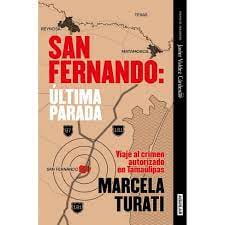A Review of Becoming Free, Becoming Black: Race, Freedom, and Law in Cuba, Virginia, and Louisiana

Becoming Free, Becoming Black: Race, Freedom, and Law in Cuba, Virginia, and Louisiana, by Alejandro de la Fuente and Ariela Gross (Cambridge: Cambridge University Press, 2020).
The year was 1690. In the city of Havana, Cuba, a 20-year old enslaved woman named Juana asked the man who held her in slavery, one Juan Junco González, to grant her freedom. She was ready to pay for it—300 pesos, a considerable sum for someone in her legal condition. González assented to her request, and the two set their contract on paper in one of the city’s notarial offices. The arrangement allows us to catch a glimpse, however limited, into the world of enslaved people in, at the time, the third largest city in the Americas. We are left with many questions. How did Juana manage to raise this money? Did she draw on profits she might have made by working in the booming urban economy? Or rather, did she turn to relatives, friends, and neighbors for help? Her act of self-purchase, while not unique, might intrigue readers who do not expect the sense of entitlement that she seems to have exuded. González did not bestow freedom upon her. Juana “asked” for it and received it.
The scene opens Becoming Free, Becoming Black: Race, Freedom, and Law in Cuba, Virginia, and Louisiana, a book set to become a classic study of law in the Americas in the age of enslavement and emancipation. The two authors, Alejandro de la Fuente and Ariela Gross, likely chose this example not because of its special nature, but rather, because it was representative of the larger phenomenon of manumission (the practice of obtaining one’s freedom through self-purchase in cash or services) and its reverberating effects in Cuba. This comparative history sets out to change our understanding of the law by successfully taking on a formidable task—to account for the role of the law in the trajectory of racial ideologies across the two Americas.
This challenge is not new, de la Fuente and Gross come at it from a fresh vantage point. Back in 1947, Frank Tannenbaum published a classic comparativist study of the laws of slavery in the British, French and Iberian Atlantic. Slave and Citizen: The Negro in the Americas opened a path that scholars associated with the subfield of new social history would take up with alacrity only some decades later, in the 1980s and 1990s. Written immediately after World War II, a moment of reckoning with eugenicist thinking, and in a country shaped by Jim Crow laws, the volume epitomized the author’s anti-racist pursuit of worlds where racialist and racist thinking was not all-determining. Tannenbaum thought to have found a world where race was more flexibly conceived than in the United States. That place was Latin America—neither too distant, nor too historically dissimilar from the United States, since it too carried slavery’s legacies. Yet there, Jim Crow segregation had not been formally entrenched through positive (written) law. Tannenbaum decided that one reason for this distinction was the region’s colonial background, which had historically allowed for more liberal policies of manumission. A sizable free population of color emerged during slavery and participated in the workings of state institutions as a result of manumission, Tannenbaum pointed out. After emancipation that population was simply too demographically significant and entitled to be controlled through legal segregation.
Slave and Citizen was more of an expression of hope than of deep archival research. It would therefore be easy to dismiss a law-centered approach to slavery, especially as delivered by Tannenbaum, as somewhat idealistic. After all, who could afford to reach a court of law and to pay for legal counseling? Were not the successes of those who did individual, and therefore of little import to those many others still held in slavery? Did legal mandates issued in Iberia matter that much, given that in plantation areas such as Cuba, planters could effectively block the reach of those laws?
Yet, in spite of these criticisms, Slave and Citizen started a resilient mode of inquiry into the trajectory of the African diaspora in Latin America. It pointed out the entanglement of the Afro-descendant experience with the legal and ecclesiastical system (enslaved people had the right to get married and to maintain familial unity in the Iberian Atlantic). Importantly, it also prodded historians to consider how ideologies of Blackness and whiteness were historically situated, with the law playing a key role in their making.
In the 1980s and 1990s, scholars interested in Latin America took Tannenbaum’s interest in a new direction. Legal sources produced at different levels of governance—from statutory law to case law or notarial records—became the bread and butter of histories of Afro-Latin America, even when scholars did not approach them to write about the law itself, but rather to put into relief the lived experiences of those held in slavery or emerging into freedom. Moreover, some explored in great depth how and why Blackness in this world region worked “like a moving target,” to paraphrase Ben Vinson III, a historian at Case Western Reserve University. De la Fuente and Gross—historians at Harvard and the University of Southern California respectively—engage with such legal sources to offer a new approach to the laws of slavery and freedom. Let me highlight some of their most intriguing findings, especially for scholars of Latin America.
The two authors point out that the first laws of slavery to be made in the Spanish colonies were oppressive. This point goes against long-established assumptions that from the get-go, the Spanish colonies had more liberal policies in place, mainly because the Crown was directly involved in governance and eager to dent the power of the aspiring enslaver elite by offering protections to the enslaved. To prove their departure from this assumption, de la Fuente and Gross take their analysis beyond Las Siete Partidas, the 13th-century Iberian compendium that served as a source of law for Spanish America into the 19th century and that encouraged owners to facilitate manumission. Tannenbaum had drawn primarily on this compendium to reach his conclusions. By contrast, de la Fuente and Gross consider law-making at lower levels of governance, analyzing among others, for instance, municipal ordinances passed by town councilors with vested interested in the institution of slavery during the 16th and early 17th centuries. Such ordinances often referred to Black people as “slaves,” thereby glossing over the possibility that they might be free, and therefore assuming freedom to be a white condition.
A second set of surprising findings is chronological in nature. De la Fuente and Gross show that the laws of slavery and freedom in Virginia, Cuba and Louisiana were not so different until around the 1830s. At their core, by 1690, these legal regimes assumed that “slaves were black, and that black people should be slaves” (p. 37). Manumission became severely restricted in Virginia and Louisiana, less so in Cuba, even though there too, local elites enhanced their policing of people of color. During the Age of Revolutions, the Spanish (Louisiana then became incorporated in the Spanish Empire) and the British opened up more paths toward manumission as a means of placating the enslaved and of coopting them. It was at this particular moment, the authors argue, that the three regions reached the most legal similarity. Yet, this was to change around 1830. In the wake of the Age of Revolutions, enslaving elites in Virginia and Louisiana (now part of the United States) turned against manumission once again, regarding it and the free population of African descent emerging through it as threats. In Cuba, planters and state officials did discuss the possibility of moving in a similar direction, but state officials remained committed to manumission as a deep-rooted equity-based measure. Upending it would have created more unrest, they reasoned.
A third set of findings answers precisely the question of why state officials in Cuba continued to endorse emancipation. De la Fuente and Gross place the free population of African descent at the center of their analysis. They argue that the presence and demographic weight of this class put pressures, even if indirectly, on state authorities and economic elites on the Caribbean island, even when sugar and coffee planting reached unprecedented profitability. The free people of color helped others held in slavery purchase their freedom or bring freedom suits to courts. Even when they themselves were enslavers, they were more likely to free enslaved people than owners identified as white. Of the three sites, Cuba had the most demographically significant such class in the 19th century. There, freedom was not racialized as white, while in Virginia, the association of whiteness and freedom was far more rigid.
The free people of color share their role as protagonists with the enslaved in this account. The book’s reliance on researching litigation to explore the making of the laws of slavery and freedom is a crucial methodological intervention. We see how litigants for freedom expanded protections, especially in Cuba, by formalizing practices that were customary and thereby entrenching them into positive law. As a result of pressures from below, purchasing oneself in installments turned from a gift that an owner could bestow upon the enslaved at their discretion, into a right that enslaved people could claim if equipped with the necessary resources by 1788. The two authors can unearth these dynamics by turning to a locally-centered methodology, one that also allows us to see origins of laws on the books in claims and practices on the ground.
Becoming Free, Becoming Black also gives us much to ponder about archives, and the legal archive in particular, as a source of knowledge about Black history in Latin America and beyond. We see in this work two sides of this institution that has been so key to historical knowledge production: the archive as a source of violence, elision and silencing (we see litigants whose cases did not go anywhere, and we can imagine many would-be litigants who never made it to the court). But de la Fuente and Gross also approach the archive as an element of a Spanish state that remained somewhat ambivalent on the institution of slavery. We see the state protecting enslaved people as vassals and trying to coopt them and steer them away from sedition. But we also see state officials deeply imbricated with slavery interests and committed to extracting profits from the labor of enslaved people. We can imagine enslaved people looking for ways to alleviate the burden of their enslavement through means that some might have considered to be extra-judicial (fugitiveness, insurgency)—and thereby trying to flee the official eye and the police archive. Attention to how such actions shaped the laws of slavery and manumission could be an avenue of investigation that perhaps other scholars will take up in the future. But we also see Black people eagerly looking to operate within the boundaries of the legal, trying to shape the state, make it theirs, own it. It is a struggle that continues to this day, yet one that we cannot understand without a deep history such as the one offered in this book.
Spring/Summer 2021, Volume XX, Number 3
Adriana Chira is an assistant professor of Atlantic World History at Emory University. Her first book, Patchwork Freedoms: Law, Slavery, and Race beyond Cuba’s Plantations, forthcoming with Cambridge University Press in 2022, is a study of emancipation in Santiago de Cuba from the perspective of Afro-descendant peasantries. It is based on two years of archival research in Cuba and Spain. You can reach her at achira@emory.edu.
Related Articles
A Review of San Fernando: Última Parada, Viaje al crimen autorizado en Tamaulipas
One of Mexico’s best investigative journalists, Marcela Turati, takes readers to terrorized and traumatized San Fernando, a town known for dozens of mass graves, and exposes the depths of criminal brutality and official corruption that hid the bodies and the truth for years.
A Review of Until I Find You: Disappeared Children and Coercive Adoptions in Guatemala
A student in my “Introduction to Cultural Anthropology” course at the University of Delaware approached me several weeks ago, after hearing about my long-term research in Guatemalan communities, to tell me that they were born there, in Guatemala.
A Review of Default: The Landmark Court Battle over Argentina’s $100 Billion Debt Restructuring
In February 2019, I found myself serving as the special attorney general for the then newly recognized interim government of Venezuela, tasked with addressing more than 50 claims before the U.S. courts stemming from the $140 billion debt inherited from Hugo Chávez and Nicolás Maduro.




